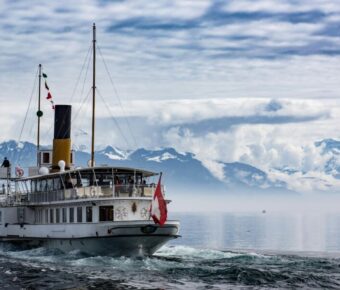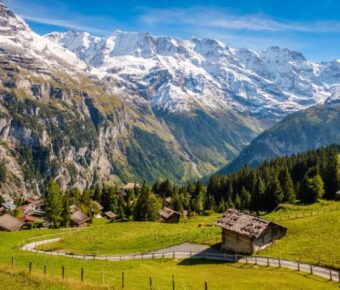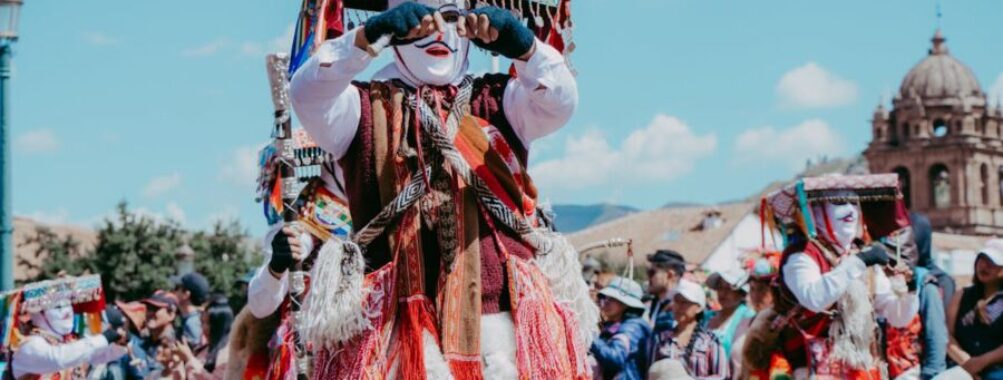
9 Enchanting Lesser-Known European Festivals for the Cultural Explorer
While tourists flock to Oktoberfest and La Tomatina, Europe’s cultural tapestry contains far more intimate and extraordinary celebrations hiding in village squares, remote islands, and medieval towns. These lesser-known festivals offer authentic glimpses into local traditions where art, music, and ancient customs collide spectacularly.
These celebrations let you experience Europe’s true spirit—where locals outnumber tourists and history feels alive in every bite, song, and dance.
Contents
- January: Kukeri Festival – Pernik, Bulgaria
- What Makes It Special
- Getting There
- Ideal Visit Length
- Festival Spotlight
- Insider Secret
- February: Lazarim Carnival – Lazarim, Portugal
- What Makes It Special
- Getting There
- Ideal Visit Length
- Festival Spotlight
- Insider Secret
- February: Fête du Citron (Lemon Festival) – Menton, France
- What Makes It Special
- Getting There
- Ideal Visit Length
- Festival Spotlight
- Insider Secret
- April: Walpurgisnacht – Harz Mountains, Germany
- What Makes It Special
- Getting There
- Ideal Visit Length
- Festival Spotlight
- Insider Secret
- May: Festival of the Unusual – Brittany, France
- What Makes It Special
- Getting There
- Ideal Visit Length
- Festival Spotlight
- Insider Secret
- July: Festival of Near-Death Experiences – Las Nieves, Spain
- What Makes It Special
- Getting There
- Ideal Visit Length
- Festival Spotlight
- Insider Secret
- July: Boom Festival – Idanha-a-Nova, Portugal
- What Makes It Special
- Getting There
- Ideal Visit Length
- Festival Spotlight
- Insider Secret
- July: Træna Festival – Træna, Norway
- What Makes It Special
- Getting There
- Ideal Visit Length
- Festival Spotlight
- Insider Secret
- August: Kettlewell Scarecrow Festival – Kettlewell, England
- What Makes It Special
- Getting There
- Ideal Visit Length
- Festival Spotlight
- Insider Secret
- August: Psy-Fi Psychedelic Music and Arts Festival – Leeuwarden, Netherlands
- What Makes It Special
- Getting There
- Ideal Visit Length
- Festival Spotlight
- Insider Secret
- Embrace the Extraordinary
- More Travel Guides
January: Kukeri Festival – Pernik, Bulgaria
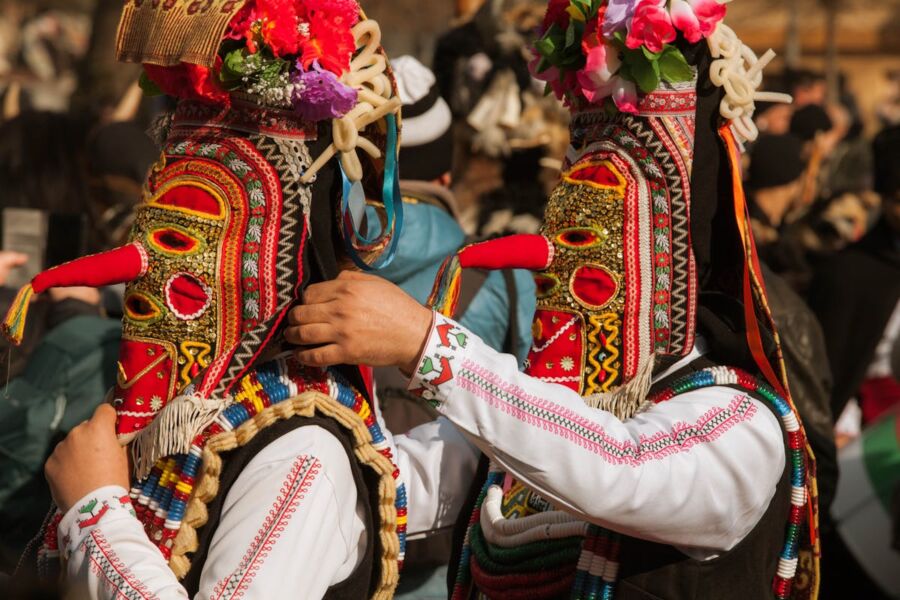
What Makes It Special
- Spectacular monster costumes with elaborate masks, animal furs, and hundreds of copper bells
- Mesmerizing ritual dances performed to drive away evil spirits and ensure fertility
- Interactive folk culture workshops teaching traditional music and dance techniques
Getting There
Take the direct train from Sofia to Pernik, a journey of approximately 30 minutes. The festival is centered around the town square, easily accessible by foot from the station.
Ideal Visit Length
2 days – one for the main parade and another for workshops and smaller performances.
Festival Spotlight
Dating back to ancient Thracian times, the Kukeri Festival transforms the industrial town of Pernik into Bulgaria’s folklore capital each January. The festival, officially called Surva, sees participants don massive handcrafted masks weighing up to 50 pounds, adorned with fur, feathers, and intricate wood carvings. As they dance through town, performers leap and stomp, creating thunderous rhythms with bells tied around their waists – a ritual believed to awaken spring and scare evil spirits into hibernation.
The heart of this cultural spectacle is the mask-making tradition, passed down through generations. Each village maintains distinct styling and symbolism in their costumes, creating fierce competition during the grand parade. Beyond the processions, you’ll find authentic food markets serving warming rakija (fruit brandy) and local delicacies like banitsa pastry, plus artisan markets where you can purchase miniature kukeri masks as meaningful souvenirs.
Insider Secret
Contact the Pernik Cultural Center at least three months before the event to arrange joining a kukeri group for a backstage experience. Several village teams welcome foreigners to participate in preparations and even join the procession wearing traditional costumes – an experience rarely advertised but enthusiastically shared with genuinely interested visitors.
February: Lazarim Carnival – Lazarim, Portugal
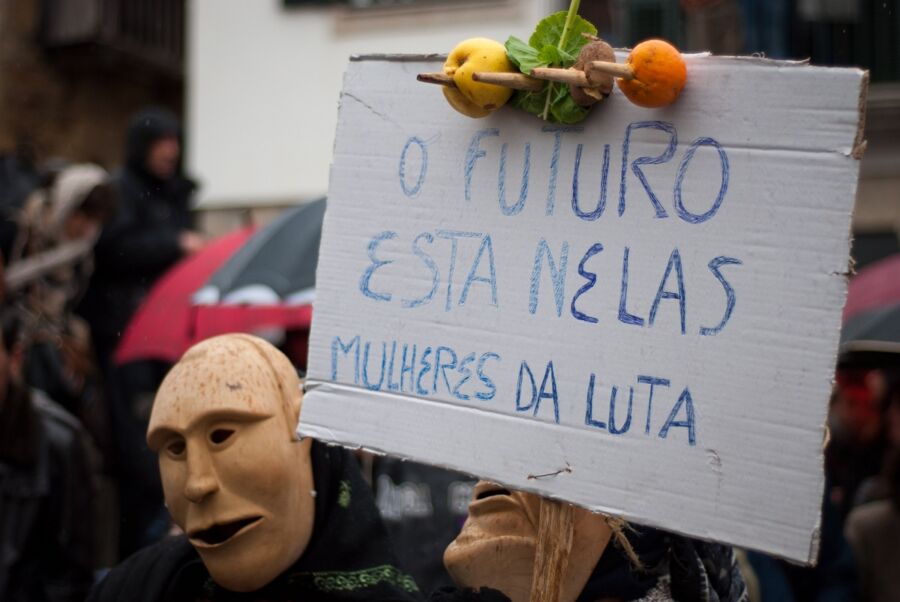
What Makes It Special
- Handcrafted wooden masks created through centuries-old woodcarving techniques
- Satirical performances poking fun at local and national political figures
- Ritual burning ceremonies symbolizing purification before Lent
Getting There
Take the train to Lamego, then hire a local taxi for the 15-minute drive to Lazarim. For the authentic experience, arrange transport through your accommodation as bus service is limited.
Ideal Visit Length
2 days – spend one day observing mask-making techniques and the second experiencing the carnival itself.
Festival Spotlight
In the mountain village of Lazarim, the pre-Lenten carnival preserves one of Europe’s most unique mask-making traditions. Unlike the colorful masks of Venice or the elaborate costumes of Rio, Lazarim’s festival centers around intricately carved wooden masks known as “caretos,” crafted from alder and willow trees using traditional tools and techniques dating back centuries.
The caretos come in male and female pairs, with exaggerated features that often satirize local figures or archetypal characters. Carvers work for months leading up to the festival, with techniques passed down through generations. During carnival, locals don these wooden faces along with costumes made from colorful fringe and foraged natural materials to parade through the village streets.
The festival culminates with the “Sermon of the Compadres and Comadres” – a humorous public reading that playfully critiques community events from the past year, followed by a symbolic burning of effigies representing the indulgences people will give up for Lent. Throughout the celebration, you’ll find traditional Portuguese folk music and dance performances, alongside food stalls serving regional delicacies like smoked meats and sweet filhós (fried dough pastries).
Insider Secret
Contact the local cultural association “Associação Cultural Caretos de Lazarim” directly via Facebook to arrange home stays with mask-making families. These arrangements aren’t available on booking sites but offer invaluable opportunities to observe the carving process up close and learn family secrets passed down through generations of artisans.
February: Fête du Citron (Lemon Festival) – Menton, France
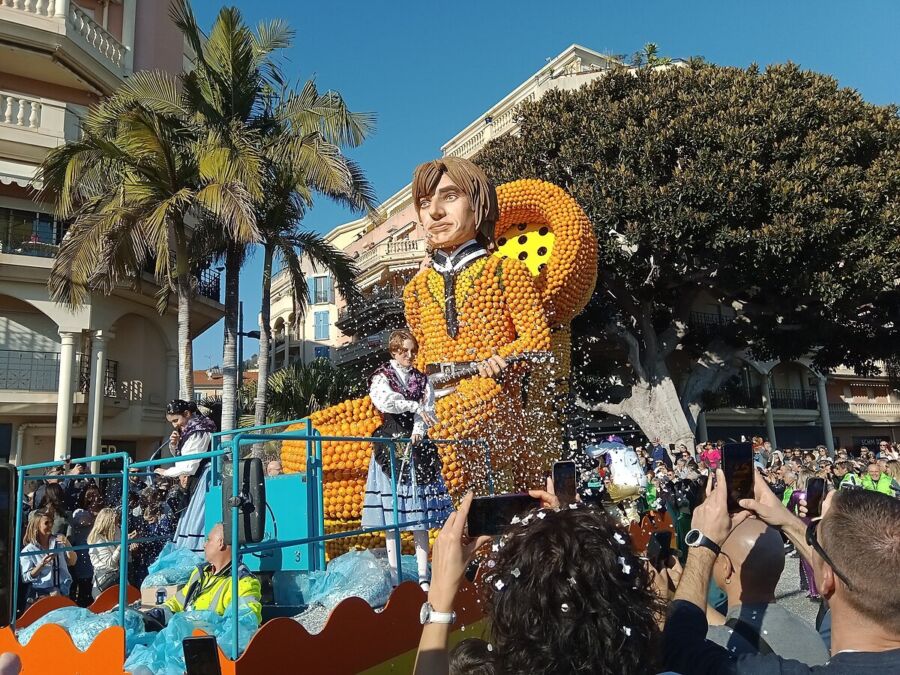
What Makes It Special
- Massive citrus sculptures using over 140 tons of lemons and oranges
- Nighttime illuminated garden tours showcasing the art installations under magical lighting
- Mediterranean citrus culinary experiences featuring unique regional dishes
Getting There
Menton sits on the Franco-Italian border along the French Riviera. Take the regional train from Nice or Monaco directly to Menton station, which is a short walk from the festival grounds.
Ideal Visit Length
2-3 days – the sculptures require at least a full day to properly appreciate, plus time for parades and culinary experiences.
Festival Spotlight
On the sun-drenched French Riviera, where France kisses Italy, the sleepy town of Menton transforms each February into a surreal citrus wonderland. The Fête du Citron celebrates the town’s historic lemon cultivation with breathtaking sculptures and displays created from over 140 tons of citrus fruits. Started in 1934 to boost winter tourism, this fragrant festival has grown into one of the region’s most distinctive cultural events.
Enormous art installations—some standing over 30 feet tall—depict everything from famous landmarks to mythological scenes, all constructed entirely from lemons and oranges. These masterpieces require meticulous planning and thousands of hours to assemble, with fruits carefully attached one by one to wire frames. Themed differently each year, past editions have celebrated everything from Jules Verne’s fantastical worlds to the great civilizations of history.
Beyond the visual spectacle, the festival celebrates Mediterranean culinary traditions with specialized citrus markets featuring local producers. Sample rare citron varieties, bergamot-infused chocolates, and limoncello produced from the prized Menton lemons—known for their high essential oil content and distinctive perfume. Street performers, traditional music from the region, and the Corso des Fruits d’Or (Golden Fruit Parade) featuring citrus-covered floats complete this sensory celebration.
Insider Secret
Skip the expensive accommodations in Menton and stay just across the border in the Italian town of Ventimiglia. Not only are hotels significantly cheaper, but you can enjoy authentic Italian cuisine in the evening and take the 10-minute train ride to Menton each morning. Purchase the multiday festival pass (Jardin des Lumières) for unlimited access to the citrus exhibitions and discounted parade tickets through the festival website, saving nearly 40% compared to individual tickets.
April: Walpurgisnacht – Harz Mountains, Germany
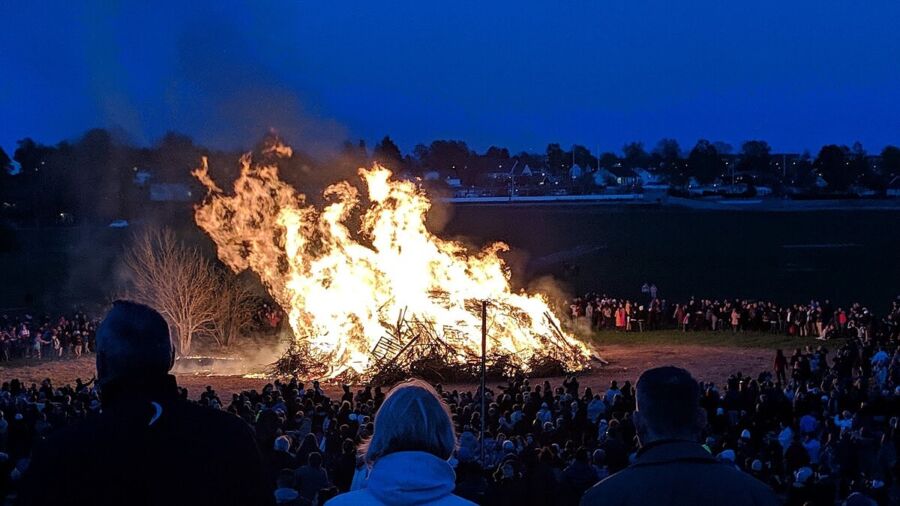
What Makes It Special
- Ancient pagan fire rituals atop Germany’s mystical Brocken mountain
- Elaborate witch costumes and performances bringing folklore to life
- Midnight forest processions illuminated only by torchlight
Getting There
Take a train to Wernigerode, then connect to the historic Brockenbahn steam train that climbs to the summit of the Brocken mountain, where the main celebrations occur.
Ideal Visit Length
2 days – one for the main Walpurgisnacht celebrations and another to explore the picturesque Harz mountain villages.
Festival Spotlight
Deep in Germany’s mist-shrouded Harz Mountains, the ancient pagan celebration of Walpurgisnacht (Witches’ Night) erupts each April 30th, marking the moment when winter surrenders to spring. According to local legend, this is the night when witches and supernatural beings gather on the Brocken mountain—the highest peak in the range—to revel with the devil before May Day arrives.
The tradition dates back to pre-Christian Germanic folklore, intertwined with the later Christian feast of Saint Walpurga. Today, the entire region embraces this mystical heritage with elaborate celebrations. Villages like Thale, Schierke, and Wernigerode transform into otherworldly scenes as locals don incredible witch and devil costumes, with grotesque masks handcrafted from local materials and designs passed down through generations.
As darkness falls, bonfires are lit across the mountainsides, and torch-bearing processions wind through medieval streets and forest paths. Traditional folk music mixes with theatrical performances retelling local legends, while craft markets offer handmade wooden witch figurines, magical herbs, and traditional food like Harz cheese and hearty game stews. The most dedicated revelers make the pilgrimage to the Brocken summit—the setting for Goethe’s Faust—where the largest gathering occurs around a massive bonfire as midnight approaches.
Insider Secret
Book accommodations in the tiny village of Schierke at least six months in advance. This lesser-known base provides the most authentic experience and easiest access to the mountain rituals. The local tourism office (Schierke Tourist Information) can connect you with private cottage rentals that never appear on major booking sites, often at half the price of commercial options. For the full experience, join the guided torchlight hike to the Brocken summit, which must be reserved directly through the Harz National Park office—these limited spots fill up months in advance but offer exclusive access to certain ritual sites closed to the general public.
May: Festival of the Unusual – Brittany, France

What Makes It Special
- Bizarre art installations transforming the coastal landscape into surreal galleries
- Peculiar competitive events like backwards walking races and strange instrument concerts
- Interactive oddity workshops teaching unconventional artistic techniques
Getting There
Take the high-speed train (TGV) from Paris to Rennes, then connect to regional trains or buses to reach the festival grounds along the Brittany coast. The exact location rotates among small coastal villages each year.
Ideal Visit Length
2-3 days – the festival’s dispersed nature rewards a longer stay to discover hidden performances and installations.
Festival Spotlight
Along Brittany’s rugged coastline, the Festival of the Unusual celebrates the bizarre, unexpected, and wonderfully weird aspects of art and culture. Unlike traditional arts festivals, this gathering embraces the fringes of creativity—the beautiful misfits of cultural expression that defy categorization and conventional appreciation.
Established in 1995 by a collective of avant-garde artists, the festival transforms a different coastal village each May into an open-air gallery of the strange. Interactive art installations appear in unexpected places—from tide pools and ancient stone formations to abandoned fishermen’s cottages. Past highlights have included a musical staircase played by the ocean tide, a field of mechanical flowers that “bloom” when approached, and a cave transformed into a camera obscura projecting the sea onto ancient rock walls.
The heart of the festival lies in its performances and competitions. Watch contestants race while balancing traditional Breton fishing baskets filled with increasingly absurd items, or join the “symphony of found sounds,” where participants create music using only objects collected from the beach that morning. Local chefs embrace the theme with unusual food pairings like seaweed ice cream and salted caramel seafood, while traditional Breton music receives experimental reinterpretations with invented instruments.
Throughout the event, the line between spectator and participant blurs as visitors are invited to contribute to evolving art pieces or join impromptu dance performances choreographed on the spot. The festival deliberately maintains a low international profile, focusing instead on preserving its authentic character and commitment to celebrating the truly unusual.
Insider Secret
Rather than staying in busy Rennes or the designated festival village (where accommodation prices triple), book rooms in one of the fishing villages about 5-10 miles away. Local fishermen and their families often rent spare rooms during the festival season, offering authentic home-cooked Breton seafood breakfasts and insider knowledge of hidden festival events not listed in the official program. Contact the festival directly via their minimalist website (which remains charmingly stuck in web design circa 2005) and request their “unusual accommodations list” available only in French and only by email request.
July: Festival of Near-Death Experiences – Las Nieves, Spain
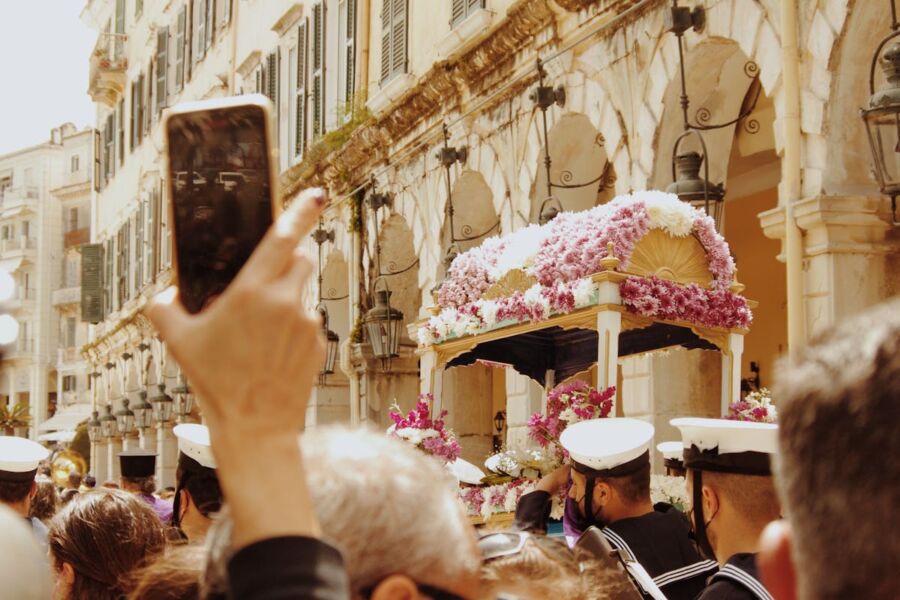
What Makes It Special
- Unique procession of “resurrected” in coffins carried by loved ones as thanksgiving
- Ancient ritual ceremonies blending Catholic and pagan traditions
- Traditional Galician folk music and dance performances throughout the village
Getting There
Take a bus from Vigo to Las Nieves (also known as Santa Marta de Ribarteme), approximately a one-hour journey through the verdant Galician countryside.
Ideal Visit Length
1 day – the festival is concentrated into a single day of intense celebration.
Festival Spotlight
In the remote Galician village of Las Nieves, one of Europe’s most unusual religious festivals takes place each July 29th, honoring those who have survived near-death experiences. The Festival of Near-Death Experiences (La Fiesta de Santa Marta de Ribarteme) centers around a solemn yet celebratory procession where survivors—having faced death and returned—are carried through town in open coffins as an act of thanksgiving to Santa Marta, the patron saint of resurrection.
This tradition, dating back to the 12th century, begins with a morning mass in the whitewashed church of Santa Marta. Those who have had brushes with death in the previous year lie in coffins, which are then hoisted onto the shoulders of friends and family members. The procession winds through the village accompanied by traditional Galician bagpipes (gaitas), drums, and rhythmic chanting. Participants often clutch offerings of wax effigies representing the body parts that were healed or saved.
Despite its somber premise, the atmosphere balances reverence with celebration. As the procession concludes, the festival transforms into a lively gathering with traditional food stalls serving pulpo á feira (octopus prepared in the Galician style), empanadas, and local Albariño wines. Throughout the afternoon and evening, folk music performances and impromptu dance circles form in the village square, with locals and visitors joining in celebration of life’s continuation.
The festival provides a rare window into rural Galician culture, where ancient Celtic influences blend with Catholic traditions, creating a unique spiritual landscape found nowhere else in Europe. The event remains refreshingly uncommercial, preserved as a genuine expression of local faith rather than a tourist attraction.
Insider Secret
The parish priest arranges simple room accommodations in villagers’ homes for travelers genuinely interested in the religious and cultural aspects of the festival. These arrangements are never advertised commercially but can be secured by emailing the parish (in Spanish only) at least three months in advance. Participants in the procession sometimes seek foreigners to help carry coffins, especially if they understand some Spanish or Galician—an extraordinarily rare honor typically reserved for family members.
July: Boom Festival – Idanha-a-Nova, Portugal
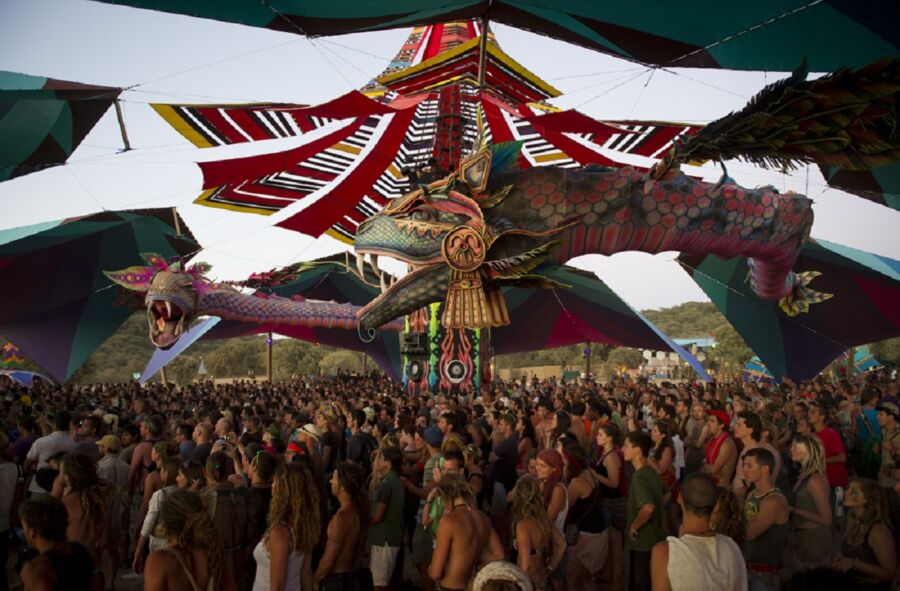
What Makes It Special
- Breathtaking sustainable art installations created from natural and recycled materials
- Cutting-edge world music across multiple stages featuring rare international collaborations
- Hands-on sustainability workshops teaching practical environmental skills
Getting There
Festival buses run from Lisbon and Porto directly to the festival site at Herdade da Granja near Idanha-a-Nova. Alternatively, take a train to Castelo Branco and connect with the festival shuttle service.
Ideal Visit Length
7 days – this biennial festival is designed as a complete week-long experience with multiple dimensions to explore.
Festival Spotlight
Every two years on the shores of Idanha-a-Nova lake in central Portugal, the Boom Festival creates a temporary autonomous zone where art, environmentalism, and transformative music converge. Far from mainstream music festivals, Boom has evolved since 1997 into a globally recognized celebration of cultural diversity, environmental consciousness, and artistic expression.
What distinguishes Boom is its unwavering commitment to sustainability. The entire festival infrastructure—from stages to bathrooms—is built using natural building techniques like cob, bamboo, and recycled materials. The site features one of Europe’s largest festival permaculture systems, treating all wastewater naturally and generating solar energy. This environmental focus extends beyond infrastructure into educational opportunities, with daily workshops on permaculture design, sustainable technologies, and ecological restoration.
Artistically, Boom transforms the lakeside landscape into an open-air gallery of monumental art installations, many integrating with the natural environment in stunning ways. Past editions have featured floating gardens, geodesic domes housing immersive light experiences, and massive sculptures that change appearance from day to night. The music programming spans multiple stages showcasing everything from traditional global folk music to electronic genres, with an emphasis on cultural fusion and artistic quality over commercial appeal.
The festival’s cultural program provides intellectual depth with lectures, film screenings, and discussions on topics ranging from indigenous knowledge to future technologies. A dedicated healing area offers traditional practices from around the world, while the food markets showcase organic, locally sourced cuisine representing diverse global traditions.
Insider Secret
Join the Boom volunteer program six months before the festival through their official website. Volunteers receive free entry and access to special camping areas in exchange for working shifts before, during, or after the festival. The most coveted positions are with the art installation teams, where you’ll work alongside international artists creating the festival’s iconic structures. These positions fill rapidly but provide an incomparable behind-the-scenes experience of festival creation while saving the €200+ ticket price.
July: Træna Festival – Træna, Norway
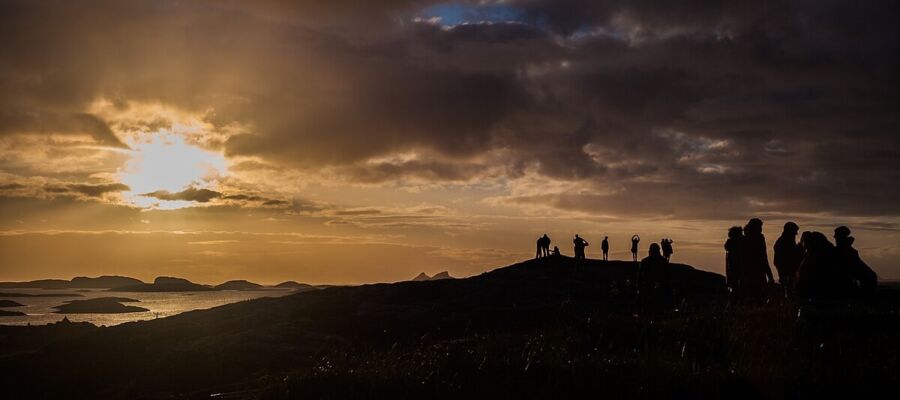
What Makes It Special
- Concerts inside ancient sea caves with extraordinary natural acoustics
- Performances under the midnight sun creating magical 24-hour experiences
- Immersive Norwegian seafood experiences with local fishing families
Getting There
Take the ferry from Bodø to the remote Træna archipelago, located on the Arctic Circle. The journey takes approximately 3-4 hours through the spectacular Norwegian coastline.
Ideal Visit Length
3-4 days – the isolated location and unique atmosphere reward a longer stay.
Festival Spotlight
On a tiny archipelago perched at the edge of the Arctic Circle, Træna Festival creates one of Europe’s most extraordinary music experiences. For four days each July, this remote fishing community—home to just 500 year-round residents—welcomes musicians and cultural explorers to experience performances in perhaps the world’s most dramatic natural venues: ancient sea caves, weathered beaches, and fishing boats under the glow of the midnight sun.
The festival’s main stage sits in the shadow of the distinctive mountain Trænstaven, while the most sought-after performances happen inside Kirkehelleren, a cathedral-like sea cave with natural acoustics that have been appreciated since the Stone Age, when it served as a sacred site. Here, classical ensembles, folk musicians, and acoustic performers create unforgettable sonic experiences as sunlight filters through the cave’s natural skylight opening.
What makes Træna truly special is how it integrates with the archipelago’s fishing culture. Local families open their homes for accommodations, traditional fish processing facilities transform into temporary venues, and the island’s fishermen offer boat transport between performance sites. The culinary program celebrates Norway’s seafood traditions with pop-up restaurants serving just-caught Arctic cod, halibut, and the local delicacy of hjemmelaget bacalao (homemade salt cod stew).
The festival’s timing during the midnight sun period means performances continue around the clock, with late-night concerts bathed in the golden light of the never-setting Arctic summer sun. The programming thoughtfully balances Norwegian folk traditions with contemporary Nordic jazz, rock, and electronic music, prioritizing artistic quality over commercial appeal.
Insider Secret
The festival website doesn’t advertise the “boat camping” option, which can only be arranged through direct contact with local fishing families. Several island families offer spots to moor small boats in protected harbors with access to their home facilities (bathrooms, kitchens). If you’re comfortable with basic accommodations, contact the Træna Tourist Office directly and request to be connected with these families. This option costs roughly half what land camping does while providing an authentic connection to local maritime culture and often includes invitations to join family seafood meals.
August: Kettlewell Scarecrow Festival – Kettlewell, England
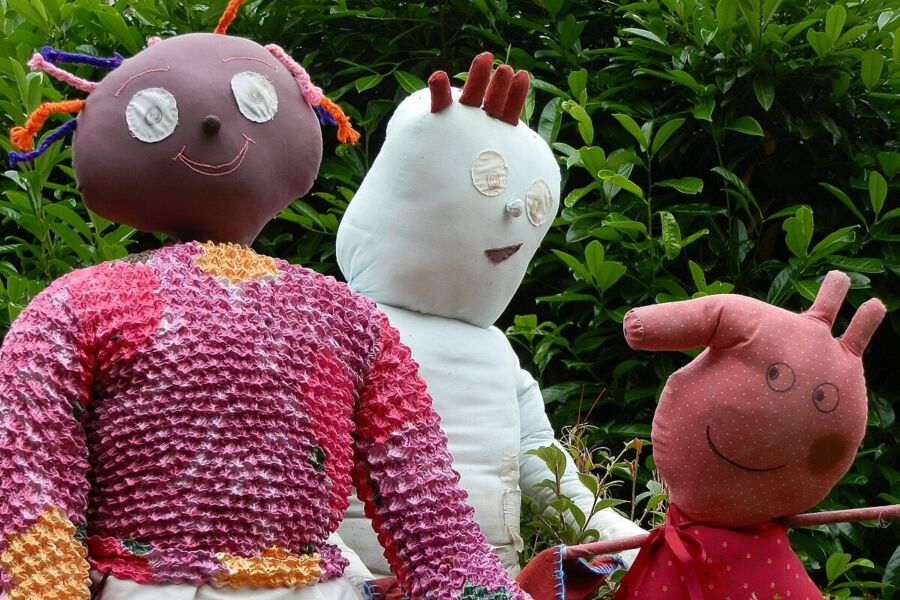
What Makes It Special
- Hundreds of handcrafted scarecrows displayed throughout a picturesque Yorkshire Dales village
- Interactive scavenger hunt trails designed for different ages and interests
- Traditional English folk music and dance in the village square and local pubs
Getting There
Take a train to Skipton, then catch the 72 bus to Kettlewell, traveling through the scenic Yorkshire Dales National Park.
Ideal Visit Length
1-2 days – one day for exploring the scarecrow trails and another for workshops and performances.
Festival Spotlight
Nestled in the heart of Yorkshire Dales National Park, the stone-built village of Kettlewell transforms each August into an open-air gallery of creativity and humor during its annual Scarecrow Festival. What began in 1994 as a small fundraiser for the local school has evolved into a beloved cultural event that maintains its authentic community spirit while attracting visitors from across the UK and beyond.
For nine days, nearly every home and business in the village displays elaborately crafted scarecrows representing everything from literary characters and historical figures to satirical takes on current events. Each year features different themed trails—visitors can follow treasure hunt maps to locate specific scarecrows while solving clues and riddles that lead through the village’s winding lanes, meadows, and streams.
The scarecrows themselves showcase remarkable craftsmanship and humor, with many featuring moving parts, sound effects, and intricate detailing. Village residents spend months preparing their creations, with techniques and design tips passed down through generations of participants. What distinguishes Kettlewell’s festival from similar events is its full integration with village life—scarecrows appear in gardens, on rooftops, climbing walls, peering from windows, and even seated in the village pub with a half-finished pint of local ale.
Beyond the scarecrow displays, the festival features hands-on workshops where visitors learn traditional scarecrow-making techniques using locally sourced materials. The village hall hosts daily demonstrations of Yorkshire crafts like dry stone walling and wool spinning, while local food stalls serve authentic Yorkshire specialties including Wensleydale cheese, Yorkshire puddings, and parkin (a traditional ginger cake). In the evenings, folk bands perform in the village square and three historic pubs, with spontaneous dancing and storytelling sessions bringing together visitors and locals.
The festival remains remarkably uncommercial, with all proceeds supporting the village school, church restoration, and community center. This authentic village celebration offers a window into rural English culture that has largely disappeared elsewhere, combining creativity, community spirit, and the dramatic natural beauty of the Yorkshire Dales landscape.
Insider Secret
The King’s Head pub offers a special “scarecrow package” that includes accommodation, breakfast, and after-hours access to the scarecrow workshop where next year’s displays are planned. This isn’t advertised online—you must call the pub directly and mention your interest in scarecrow-making to access this offer. Guests of the package are invited to the locals-only closing night party, where villagers share behind-the-scenes stories and plans for the following year’s themes and displays.
August: Psy-Fi Psychedelic Music and Arts Festival – Leeuwarden, Netherlands
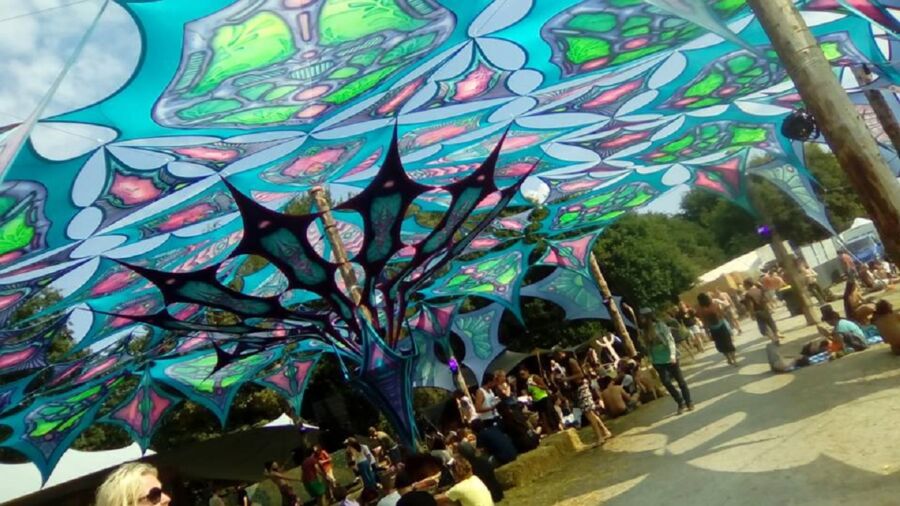
What Makes It Special
- Visionary art exhibitions featuring international artists creating live installations
- Lakeside stages with experimental music blending world instruments and electronic sounds
- Philosophy and consciousness lectures with renowned speakers from diverse disciplines
Getting There
Take the train to Leeuwarden in Friesland, northern Netherlands, then use the festival shuttle buses that run to the lakeside location at De Groene Ster recreational area.
Ideal Visit Length
3-5 days – the festival offers multiple dimensions beyond music that reward a longer stay.
Festival Spotlight
On the peaceful shores of a lake near Leeuwarden in the northern Netherlands, the Psy-Fi Festival creates a temporary universe where art, music, and philosophical exploration converge. Unlike mainstream music festivals, this gathering centers around a thoughtful intersection of visionary art, consciousness exploration, and cultural exchange within a stunning natural setting.
The festival grounds transform the lakeside landscape into an immersive art park where large-scale installations—many incorporating reflective elements that interact with the water—create surreal environments that shift from day to night. Art isn’t merely displayed but actively created throughout the event, with international artists working on live paintings and collaborative sculptures that evolve over the festival’s duration. Dedicated art spaces offer workshops in techniques ranging from traditional mandala creation to modern digital projection mapping.
Musically, Psy-Fi distinguishes itself through extraordinary attention to acoustic design. Multiple stages are positioned to work with the natural landscape—sounds reflect across the lake rather than competing with each other. The programming spans global traditions, with particular focus on instruments and techniques that create trance-like experiences: from Traditional Sufi whirling performances and Tibetan throat singing to contemporary ambient and electronic music that draws inspiration from these ancient practices.
The heart of the festival’s unique character lies in its “Healing Area” and “Philosophy Hub,” where lectures and workshops explore the intersection of neuroscience, philosophy, ethnobotany, and consciousness studies. These spaces foster genuine dialogue between academics, traditional knowledge keepers, and festival attendees, creating educational opportunities rare in festival environments.
Sustainability forms another core principle, with the festival implementing comprehensive waste management systems, compostable serveware, and energy-efficient technologies. The food village showcases organic, locally-sourced cuisine with an emphasis on vegetarian and vegan options from diverse world traditions.
Insider Secret
Join the festival’s online community forum at least six months before the event to connect with locals from Leeuwarden and nearby villages who offer private homestays at half the price of official accommodation options. These stays often include bicycle loans (the ideal transportation to and from the festival) and insider knowledge of the best swimming spots and sunset viewing locations around the festival grounds. Some hosts are former festival organizers who can provide introductions to artists and speakers participating in the current year’s event.
Embrace the Extraordinary
These hidden cultural celebrations reveal Europe’s soul beyond the tourist crowds. By timing your travels around these lesser-known festivals, you’ll witness traditions that have shaped local identities for centuries, forming connections impossible to experience through conventional tourism. The memories you’ll gather—dancing with kukeri performers in Bulgarian mountain villages, helping carry a survivor’s coffin in rural Galicia, or watching midnight sun concerts in Arctic sea caves—become windows into authentic European life rarely glimpsed by outsiders. Pack an open mind, embrace the unexpected, and let these extraordinary celebrations transform your understanding of the continent’s living cultural heritage.
